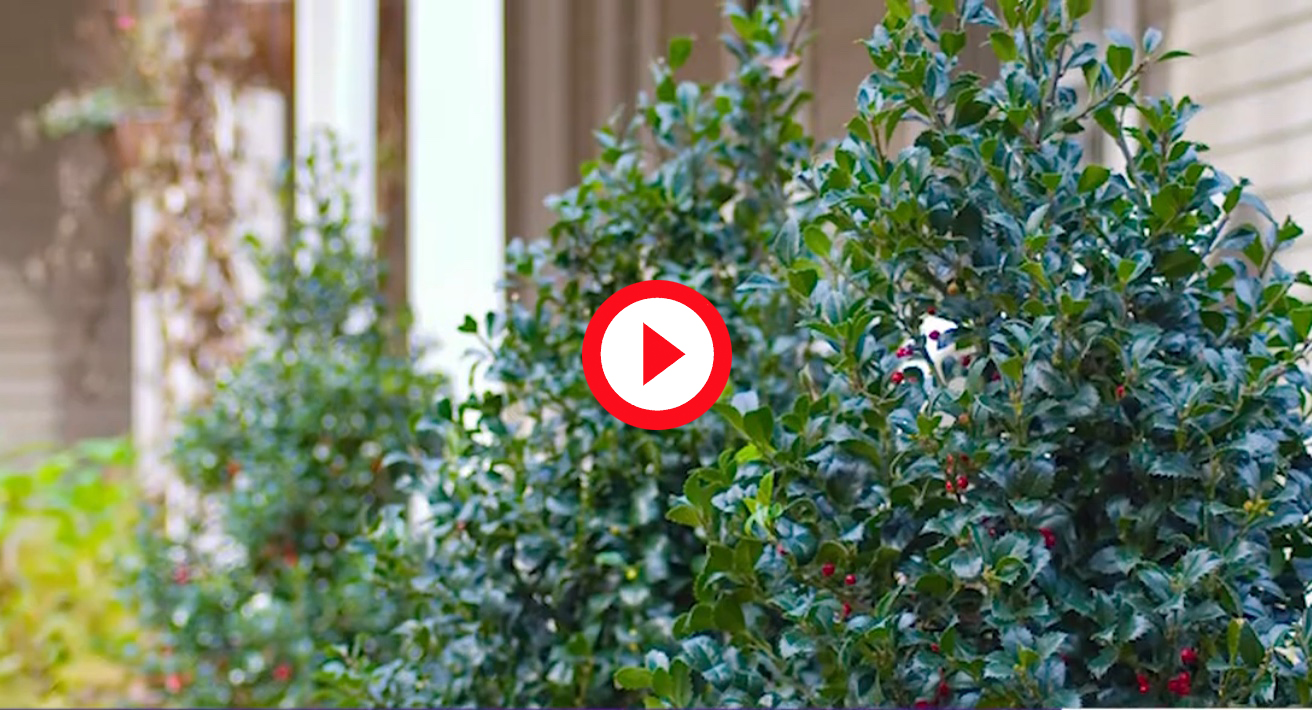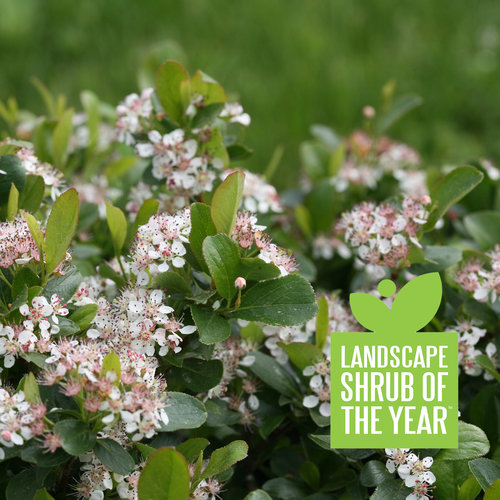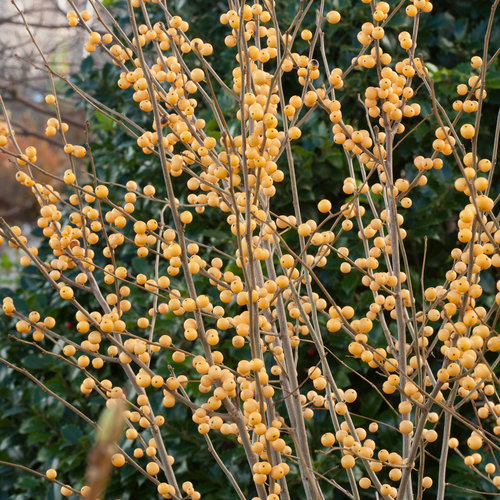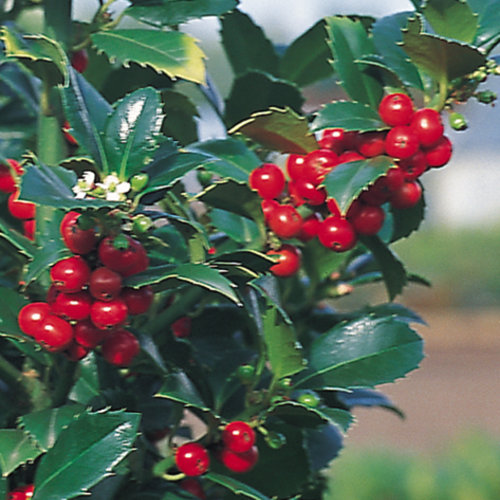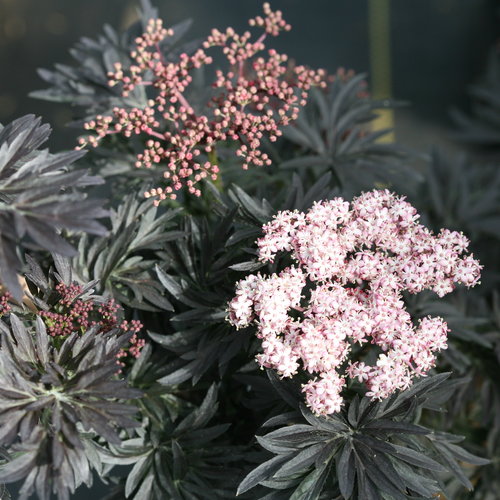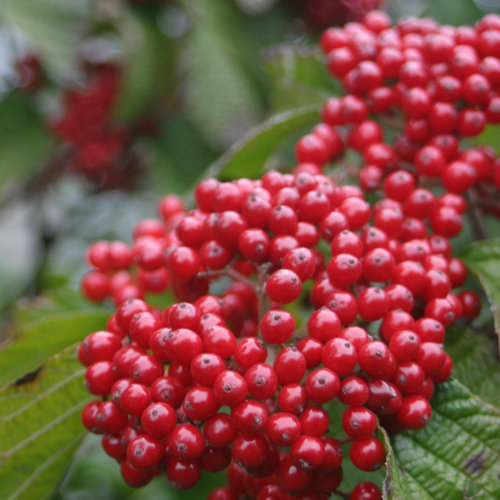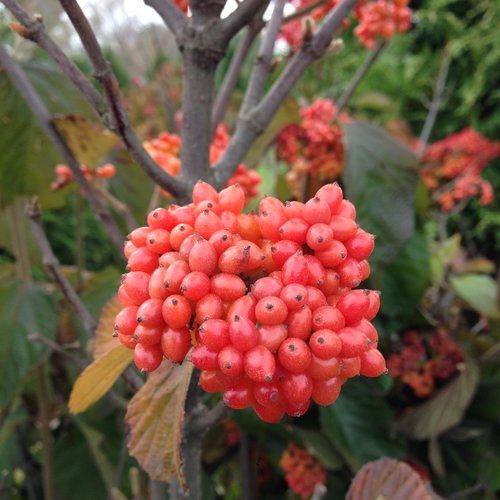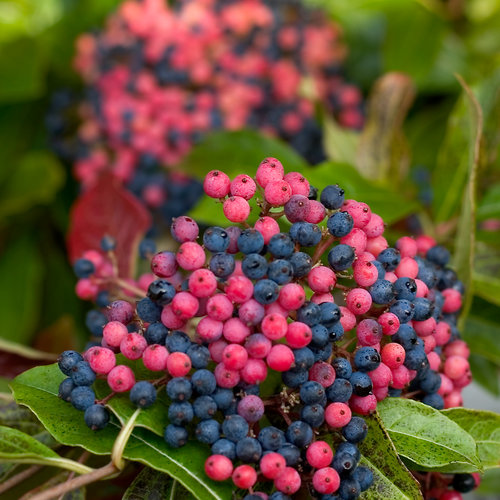10 Berry Producing Shrubs
Leaves get all the credit for making autumn beautiful, but berries are no slouch at bringing a whole new range of colors, forms, and interest to the landscape. However, lots of gardeners miss out on the unique feature of berries because the plants that create them don’t look like much when during the prime spring shopping season at garden centers. Here’s your chance to change that! Adding these shrubs that have beautiful fruit to your planting list will ensure an even more colorful autumn next year and beyond.
Top 10 Shrubs for Berries VIDEO
One of the toughest and most durable shrubs we offer is also one of the best for multi-season interest. Low Scape Mound aronia looks great starting in early spring, when it is covered in neat white flowers with prominent pink pollen in the center. By late summer, those have developed into deep purple-black berries. While they are technically edible, they come by their common name of “chokeberry” earnestly: they have a powerful tartness that sucks the moisture out of your mouth. But no worries: birds and other wildlife will happily take care of them in time. Hardy in zones 3-9.
Pollinating variety required? No. Low Scape Mound aronia is self-fruitful, so even if you plant only one, you’ll still get berries.
Once you’ve seen a beautyberry in real life, you simply must have one for your garden. Those amazing pink berries just look too good to be true! The trouble is that conventional beautyberry varieties are often really large, taking up a lot of space, and up until they start to flower in fruit in late summer, they definitely don’t look like anything to get excited about. But that’s exactly what makes Pearl Glam beautyberry so distinctive: it has a narrow, upright, space-saving habit and deep purple foliage that makes it an engaging member of the landscape well before berry season. Hardy in zones 5-8.
Pollinating variety required? No. Pearl Glam beautyberry is self-fruitful, so even if you plant only one, you’ll still get berries.
Winterberry holly (Ilex verticillata) is a bit unusual in that unlike the more traditional types, it loses its leaves over winter. But rather than a liability, it’s a benefit, as it gives the plump, closely-spaced berries even more impact in the landscape, and makes a long-lasting cut stem for arranging indoors. This native shrub is also one of our most wide-ranging, thriving from chilly USDA zone 3 through steamy USDA zone 9. We offer one of the most comprehensive selections of winterberry hollies on the market, from our classic Berry Heavy series (featuring both red and yellow selections!) to our space-saving dwarf Poppins and Little Goblin series. Winterberry holly is extremely shade-tolerant and deer resistant, but it definitely does best in average to wet soils. Berries last through mid-late winter in most years: after cold temperatures have softened them considerably, they sustain birds through the last lean weeks of the season. Hardy in zones 3-9.
Pollinating variety required? Yes. Like other hollies, winterberry holly plants are either male or female, and both are required for berries to develop on the female. One male plant can pollinate up to five female plants, and they should be planted within 50’/15.24m of one another. Mr. Poppins holly is a suitable pollinator for Berry Heavy and Berry Poppins; Little Goblin Guy is best used for the other Little Goblin varieties. If you cannot find one of our recommended pollinators, ‘Jim Dandy’ will do.
For berries well before and after autumn, plant Gin Fizz juniper. This distinguished evergreen was selected for its abundant crop of hard blue fruits that nestle among the foliage from early summer all through winter. Juniper berries are, of course, the main flavoring in gin, and they have a host of other aromatic and culinary use as well. But even if you have no intention of using them in that way, you’ll enjoy the texture and color they contribute to this sun-loving, deer resistant evergreen. A fantastic choice for a hedge! Hardy in zones 4-8.
Pollinating variety required? No. Fruits will develop even if there’s only one Gin Fizz juniper in your yard.
Here are the traditional hollies you know and love: glossy blue-green foliage and cheerful red berries. Our Castle series of hollies were selected from the world-renown Meserve hollies (aka blue holly) developed by amateur plant breeder Kathleen Meserve in her Long Island backyard in the 1950s. Look to the Castle hollies for a range of different heights and sizes to accomplish any landscape role, from a stunning specimen to a lush hedge. The berries on blue holly are typically green until early autumn, when they start taking on their red tones, so don’t look for these plants to become super showy until the season is winding down. Hardy in zones 5-7.
Pollinating variety required? Yes. Like all hollies, blue hollies are either male or female, and both must be present for the berries to develop on the female. One male can pollinate up to five female plants, and they should be planted within 50’/15.24m of one another. Castle Wall holly is the male pollinator for Castle Spire and Castle Keep, our two female selections.
Black Lace elderberry got kicked out of an edible elderberry breeding program in England for being too beautiful: they were trialing plants for heavy fruit production, and while Black Lace sets a nice amount of deep black berries in autumn, it was clear that its elegant foliage and dramatic color made it better suited to the garden than the orchard. Lucky for all of us! This big, bold flowering shrub will draw tons of compliments in your landscape, with lacy black foliage all season, big, lacy pink and white flowers in early summer, and juicy black berries in early autumn. Plant in at least 6 hours of sun or bright filtered light all day for best performance. Hardy in zones 5-7.
Pollinating variety required? Yes, if you want fruit. This plant offers a lot more than berries, but if you want berries to form, whether for you or the birds, a different variety of Sambucus nigra is required. You can plant Black Beauty, Instant Karma, or Laced Up elderberry; in some areas where the North American native Sambucus canadensis grows wild, it can serve as a pollinator. In the case of elderberry, all plants will form fruit.
When it comes to autumn berries, viburnums reign supreme! Though many varieties are grown only for their handsome foliage or lacy flowers, no small number boast those qualities and boldly colorful berries too. Cardinal Candy viburnum is such an example: it’s smothered in white blooms in late spring, has big, thick, leathery leaves, and winds up the year with a truly impressive crop of lustrous red berries. Like most viburnums, it is very deer resistant and thrives even in shaded conditions. Hardy in zones 5-8.
Pollinating variety required? Not required, but recommended. Cardinal Candy will set some fruit if a compatible pollinator isn’t in the vicinity, but you’ll get a whole lot more if there is. We recommend planting Tandoori Orange within 50’ of it for a memorable display of colorful berries on both plants. In this case, maintaining a 1:1 ratio would be advised.
Light up the landscape with the lustrous orange berries of this very unique viburnum. The fruits are beautiful on their own but are especially glorious when they’re set off by the changing tones of the autumn foliage. Like its sister plant Cardinal Candy, you get to enjoy a spectacular display of white spring flowers, handsome foliage, and glossy berries, so it delivers a lot of beauty over a very long period each season. Hardy in zones 5-8.
Pollinating variety required? Not required, but recommended. Tandoori Orange will set some fruit if a compatible pollinator isn’t in the vicinity, but you’ll get a whole lot more if there is. We recommend planting Cardinal Candy within 50’ of it for a memorable display of colorful berries on both plants. In this case, maintaining a 1:1 ratio would be advised.
There are lots of shrubs that you could plant for privacy, but these two viburnums are at the top of our list of recommendations. They derive their name from their extremely lustrous, glossy foliage, which truly stands out in the landscape or garden. Tight bunches of white flowers appear in late spring, and they develop into a crop of dusky blue berries that last through winter. These two viburnums are ideal for a hedge, or plant them as anchors or focal points in your home’s landscape. Their distinguished good looks are suited to any style. Hardy in zones 4-8.
Pollinating variety required? Yes. Both All That Glitters and All That Glows viburnum must be planted within 50’ of one another for fruit to develop; however, both will get a bumper crop of fruit in such conditions. We selected these two varieties and introduced them together specifically for this purpose. Note: though they are closely related to our long-time favorite Blue Muffin viburnum, neither of them are suited to pollinating it, since they are a Southern variant of the species and bloom later.
Tim Wood, our plant hunter, likes to call Brandywine viburnum “the most beautiful berry display in the plant kingdom,” and it’s hard to argue with him. It’s something you have to watch for yourself to fully appreciate: lacy late spring flowers develop into fairly non-descript green berries during summer. By about early September, they start to make themselves known by turning a distinctive ivory. Soon after, they become a brilliant pink before finally going blue-purple. As the changes take place, you’ll often see multiple colors in each berry cluster at once. All that would make this a superlative flowering shrub, but when you add in the beautiful maroon-red color its glossy foliage takes on along with the berries, it’s a plant you’ll treasure in your landscape for years to come. Hardy in zones 5-9.
Pollinating variety required? No. Brandywine is a rare viburnum in that it is self-fruitful and does not require a different variety for berries to develop, so even if you only plant one, you’ll see a memorable performance each year. Brandywine viburnum can also serve as a pollinator for ‘Winterthur’ viburnum.



